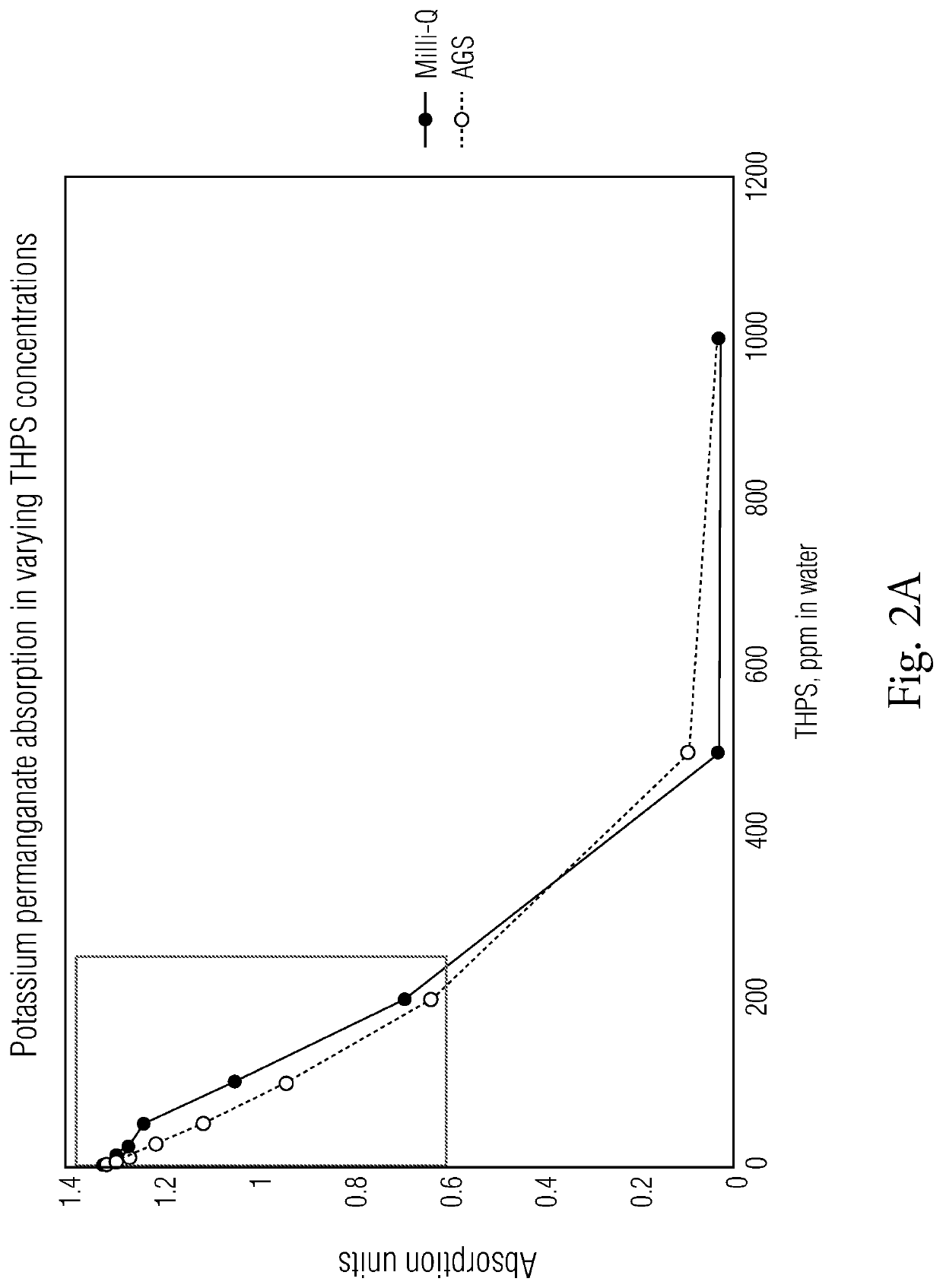Methods for detecting and quantifying tetrakis(hydroxymethyl)phosphonium sulfate (THPS) in biocide products
a technology of phosphonium sulfate and detection method, which is applied in the field of detection and quantification of compounds in biocide compositions, can solve the problems of biocide residual, limited detection range of test kits for thps, and difficulty with currently available methods and test kits
- Summary
- Abstract
- Description
- Claims
- Application Information
AI Technical Summary
Benefits of technology
Problems solved by technology
Method used
Image
Examples
example 1
[0043]A biocide product, approximated as containing 20-40% THPS and 10-20% surfactant, was used in this experiment. The biocide product was diluted in AGS into samples comprising approximately 0, 1, 2, 5, 10, 25, 50, 100, 200, 500, 1000 ppm THPS. Then, each of these samples were mixed with and 1 mM KMnO4 in MilliQ water (pH 5.0) in equal volumes and allowed to react for approximately 2 minutes. The intensity of the KMnO4 absorption at 525 nm was then measured and normalized by subtracting the background intensity at 650 nm. This process was then repeated but using a pure THPS instead of a THPS-containing biocide. The series of samples containing pure THPS (at equal concentrations as shown above for the biocide product) were then compared to the biocide-containing samples.
[0044]FIG. 4 shows the normalized absorption as function of the approximate THPS concentrations in AGS for the THPS biocide-containing samples. For comparison, FIG. 4 also shows the corresponding samples containing ...
example 2
[0045]THPS samples of 0, 1, 4, 16, 64 and 256 ppm were prepared in fresh water, and 1.5 mL aliquots from each sample were transferred to respective reaction vials. Then 1.5 mL of acidic 0.6 mM KMnO4 was added to each reaction vial, such that the THPS and the KMnO4 reacted with one another. For each sample, 2 mL were transferred to an absorption cuvette and the absorption in the range of 400-700 nm was measured. This process was then repeated but using THPS samples in salt water (sea water) instead of fresh water.
[0046]FIG. 6 shows an exemplary calibration curve for freshwater and saltwater samples in accordance with one or more embodiments. As shown in the graph of FIG. 6, the KMnO4 absorption decreases as the concentration THPS increases. Thus, a change in intensity of KMnO4 absorption in the mixture is correlated with the concentration of THPS in the water sample. As such, based on this correlation, the calibration curve is established between the THPS concentration in given sampl...
PUM
| Property | Measurement | Unit |
|---|---|---|
| wavelength | aaaaa | aaaaa |
| wavelength | aaaaa | aaaaa |
| pH | aaaaa | aaaaa |
Abstract
Description
Claims
Application Information
 Login to View More
Login to View More - R&D
- Intellectual Property
- Life Sciences
- Materials
- Tech Scout
- Unparalleled Data Quality
- Higher Quality Content
- 60% Fewer Hallucinations
Browse by: Latest US Patents, China's latest patents, Technical Efficacy Thesaurus, Application Domain, Technology Topic, Popular Technical Reports.
© 2025 PatSnap. All rights reserved.Legal|Privacy policy|Modern Slavery Act Transparency Statement|Sitemap|About US| Contact US: help@patsnap.com



